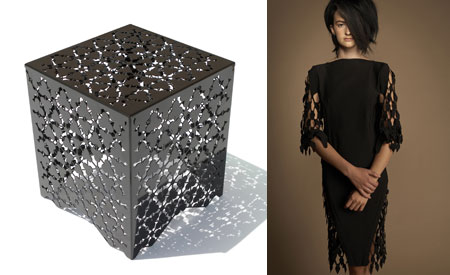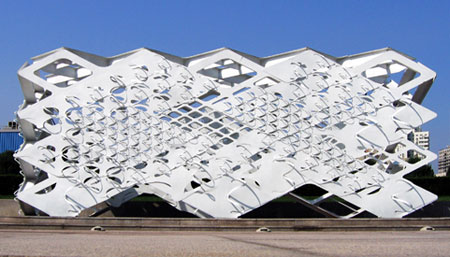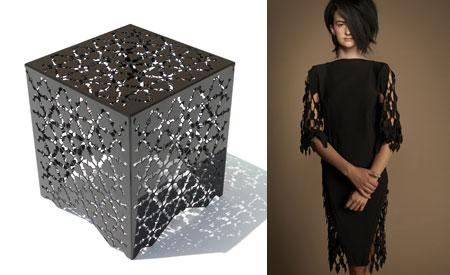Venice, California-based architect Elena Manferdini—who will be participating in a special panel discussion with architect Greg Lynn at LACMA on Monday—has two pieces in “From the Spoon to the City”: Objects by Architects from LACMA’s Collection: the Cherry Blossom jacket and skirt (2006) and the Ricami stool (2009). Together, these objects clearly demonstrate how she uses the same design concept and process to produce two very different objects.

Manferdini’s designs employ intricate patterns derived from nature or man-made materials. Her tool is the rendering and animation software Maya, which allows her to develop extraordinarily complex patterns and to visualize how a flat design will appear three-dimensionally. Originally developed for the animation industry, Maya has been widely adopted by the architecture/design community. Architects tweak the program by using specialized scripts, which they develop themselves or acquire from open-source libraries.
Both pieces start with a flat surface—stretch fabric for the garment and powder-coated steel for the stool—which are digitally laser-cut and assembled into their recognizable forms. This approach works beyond the small scale, too: Manferdini’s West Coast Pavilion at the 2006 Beijing Biennale was conceived and made in a similar way.

These emerging digital technologies are a clear signal that architecture and design have entered a new era, well beyond the drafting table. The impact of programs like Maya on architects’ abilities to design objects on all scales and across disciplines will be the jumping off point for Monday’s discussion.
Bobbye Tigerman, Assistant Curator, Decorative Arts and Design



